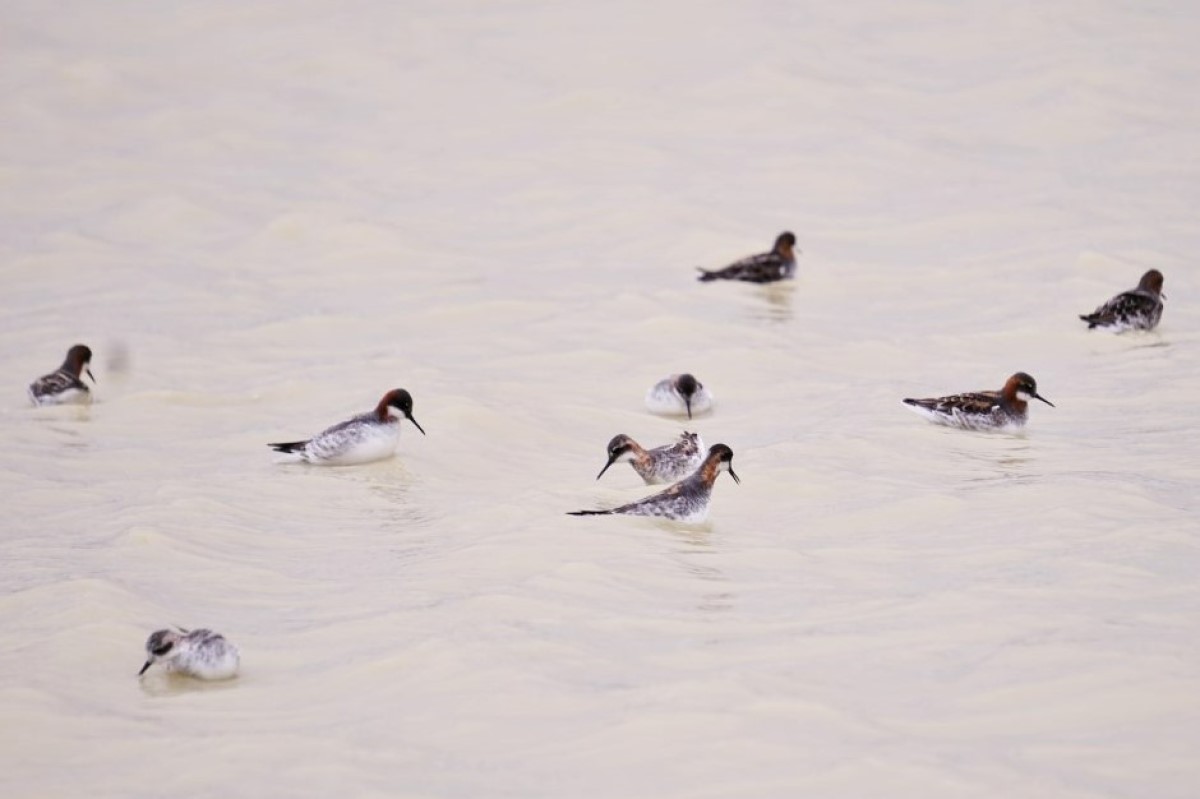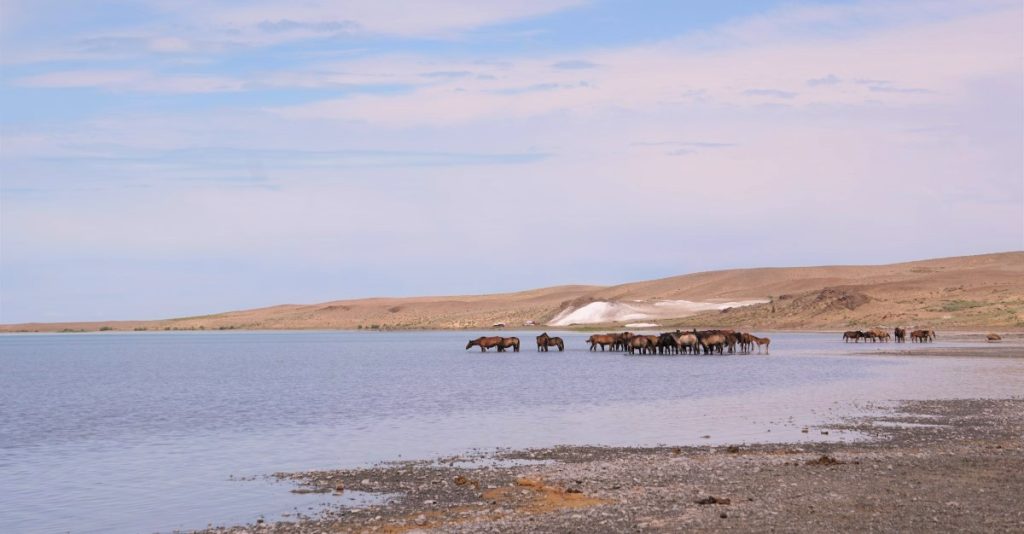
Alkaline soda pans of Hungary are special representatives of inland saline waters in the interior of the continents. The largest number of soda pans in Eurasia is found in the Carpathian Basin, and these lakes are also important resting and feeding areas for migratory birds in the European-African bird migration routes. Evidence is mounting that globally, aquatic habitats and waterbird populations are being rapidly declined by the land-use and land cover changes of recent decades (drainage, run-off), and climate change: rising temperatures and changing rainfall patterns. Waterbird populations play an important role in trophic- and host-parasite networks, and their cultural and recreational role is also important, but as bird populations and habitats decline, these ecological services are also declining.
Emil Boros, Senior Research Fellow at the Centre for Ecological Research, Institute of Aquatic Ecology, has been studying the interaction between waterbird populations and soda pans for many years. In an earlier publication in the Science of the Total Environment they found that waterbirds contribute high phosphorus loading (P) to the shallow saline lakes through their droppings, i.e. birds act as vectors of external phosphorus sources, a process called guanotrophication (bird-induced nutrient enrichment). Waterbirds, such as large-bodied herbivores (goose and duck species) and medium-bodied omnivores (e.g. gulls) have been shown to be 64% responsible for the extremely high phosphorus content of natural soda pans. However, it was also found that, the hypertrophic state of water was in contradiction with the limited primary production of natural soda pans due to the characteristics of the lakes: shallow water depth, high alkalinity (PH ≥ 9), and intermittent hydrological cycle.

In a further investigation about the interaction between inland saline aquatic ecosystems and waterbirds the aim was to show whether the ecological/trophic attributes of saline water bodies could be predicted on multi spatial-scales by different groups (guilds) of waterbirds. Also published in the prestigious journal Science of the Total Environment, Emil Boros and colleagues studied a vast area of 1700 km by 1000 km at different spatial scales in the steppe and semi-desert region of Kazakhstan, where 63 sample area were selected. Nearly 100 waterbird species occurred in the sample areas and were classified into three groups according to their role in nutrient cycling and nutrient turnover: net-importers (large herbivores e.g. geese, cranes), importer-exporters (omnivorous ducks and gulls) and net-exporters (various herbi-, omni- and piscivorous species), based on Boros’s classification method. The abundance, biomass and diversity of these bird groups (guilds) were compared with the attributes of the inland waters on multi spatial scales e.g. water depth, chlorophyll content, and at larger spatial scales, with the land cover data found in the 1 and 10 km radius around the ponds e.g. grassland or agricultural land.
Their results showed that the occurrence of the above waterbird groups was strongly correlated with the attributes of the saline aquatic ecosystems on multi-spatial scale. Water cover and salinity are the main attributes predicting of the type of bird group that occurs in a given environment. The importer-exporter and net exporter bird groups showed positive correlations with productivity metrics and water depth of the waters, while the importers were predicted by the surrounding pond environment e.g. grassland.
The practical significance of this study is that it quantifies this ecosystem services provided by waterbirds, their role in nutrient cycling, which is essential for systematic monitoring and habitat management. The classification system and methodology described in this study can be used to estimate certain environmental attributes of inland water bodies for large geographic regions by counting waterbird populations. In the future, this will provide an opportunity to use birds to estimate ecosystem function and services of aquatic systems, which in turn will require further methodological studies.

Publications:
Emil Boros, Zarina Inelova, Zsuzsanna Lánczos, Zsolt Végvári: Waterbird guilds predict environmental attributes of inland saline aquatic ecosystems on multi-spatial scales,
Science of the Total Environment, Volume 855, 2023.
https://doi.org/10.1016/j.scitotenv.2022.158845.
https://www.sciencedirect.com/science/article/pii/S0048969722059447
Emil Boros, Anita Takács, Péter Dobosy, Lajos Vörös: Extreme guanotrophication by phosphorus in contradiction with the productivity of alkaline soda pan ecosystems,
Science of the Total Environment, Volume 793, 2021.
https://doi.org/10.1016/j.scitotenv.2021.148300.
https://www.sciencedirect.com/science/article/pii/S0048969721033714
Photos: Emil Boros – Red-necked Phalarope and Lake Balkas


